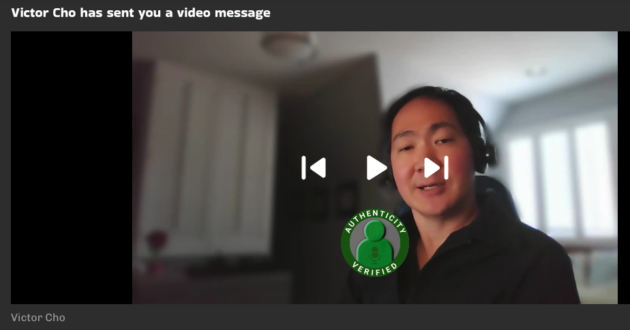
Victor Cho wants to reimagine the way people communicate at work.
Cho, the former CEO of Evite, is leading a stealthy new Seattle startup that wants to do away with billions of written emails workers send every day and replace them with video messages.
Emovid isn’t out to be the next Snap or any other app targeting consumers. And it’s not Zoom or Teams, facilitating video communication in real time. The startup’s focus is purely business correspondence, and it’s asynchronous video, meaning content that is not live streamed but rather recorded and shared for later viewing.
Cho views it as a more authentic way of getting your message across.
“There’s an entire layer of communication impact that comes through with voice and tone and that is missing from the communication threads for large chunks of business today,” Cho said.

Cho, who is based in San Francisco, led the digital invitation company Evite for more than seven years. He previously worked at Microsoft, Intuit and Eastman Kodak, and holds board positions with a number of organizations.
He’s joined by co-founders Digvijay Chauhan, Emovid’s Seattle-based CTO, who previously worked with Cho at Microsoft, and Rupali Pathania, who was previously co-founder of Vidinvite, a video company enabling the celebration of special moments via video. Emovid employs a handful of people in Seattle and remotely.
Cho estimates that 20% of the email volume on the planet should move into the format Emovid is building. He argues that it’s faster to record a spoken message than to type 100 to 300 words.
There’s no need to download an app. Emovid videos can be recorded and sent directly from the startup’s platform, accessible to anyone with a web browser. A video link can be also embedded into an existing email client or can be dropped into a LinkedIn message, a messaging app, on Facebook or elsewhere.
“The video exchange lives as a URL transport in the same way a YouTube video does,” Cho said. “It’s a bi-directional communication stream that lives on a URL. It’s a very powerful model because of that fact.”
Emovid also taps into artificial intelligence and generative AI, producing an AI summary of each video to go along with a full transcript. AI is also being used to help users compose their video messages through prompts that generate speaking suggestions which then show up in the video recorder like a teleprompter.
The AI also spiffs up the background in a video as well as the appearance of a speaker as needed. But there’s no deepfake at play — Emovid is adamant about verifying who is doing the communicating and adds an “authenticity verified” seal to each video.
“You can’t even upload a video into our site,” Cho said. “It’s got to be real-time recorded for this reason of being able to verify identity and authenticity and make that very visible in a way that nobody else is doing.”
Longtime Seattle tech leader Forest Key took a shot at video as a way to disrupt workplace communication when he and other former Pixvana execs launched Voodle in 2020. The premise was two-way selfie video chat: “what if WhatsApp and TikTok had a baby?” Key notes in his LinkedIn profile.
But Key said Voodle struggled to insert itself among countless other apps. He said the bar to break into “must have” territory is quite high for startups offering new functionality in workflows when competing against the big suites of Microsoft, Google, Salesforce, etc. as the primary apps at work.
“Our users found Voodle and asynchronous video communication ‘interesting’ but we didn’t nail ‘vital,'” Key said. “I think Emovid and others could crack the nut — selfie video really conveys emotion and humanity in a way that enhances personal connection and trust.”
Emovid is currently raising a seed round and is accepting users on its waitlist.





